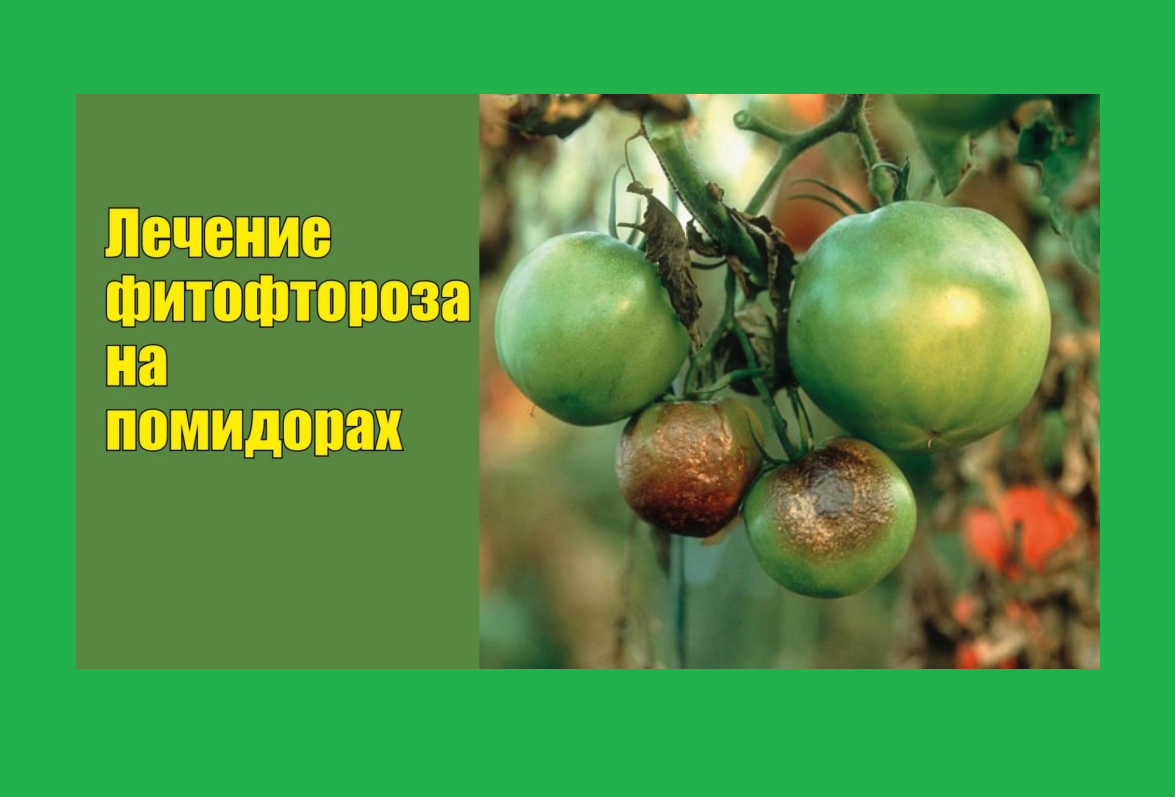
This article has many different tips, recipes that help prepare effective means of combating late blight.
The content of the article
- What is a late blight, late blight on tomatoes, what does it look, where does it come from, for what reason does it appear?
- The first signs of late blight on tomatoes: photo
- When and how to treat tomatoes, tomato tomato seedlings for prevention purposes: tips, names of drugs and folk remedies, stages of treatment
- What measures to use to save the harvest, if tomatoes have already become ill with late blight: recommendations
- How to use a trichopoline to combat late blight on tomatoes: recipes, dosage
- How to use copper wire to combat late blight on tomatoes: recipes, dosage
- Video: Copper wire from phytofores on tomatoes
- How to use milk to combat late blight on tomatoes: recipes, dosage
- How to use iodine to combat late blight on tomatoes: recipes, dosage
- How to use the drug HOM to combat late blight on tomatoes: recipes, dosage
- How to use copper sulfate to combat late blight on tomatoes: recipes, dosage
- How to use yeast to combat late blight on tomatoes: recipes, dosage
- How to use furatsilin to combat late blight on tomatoes: recipes, dosage
- How to use salt to combat late blight on tomatoes: recipes, dosage
- How to use green to combat late blight on tomatoes: recipes, dosage
- How to use kefir to combat late blight on tomatoes: recipes, dosage
- How to use serum from milk to combat late blight on tomatoes: recipes, dosage
- How to use hydrogen peroxide to combat late blight on tomatoes: recipes, dosage
- How to use soda to combat late blight on tomatoes: recipes, dosage
- How to use garlic to combat late blight on tomatoes: recipes, dosage
- How to use potassium permanganate to combat late blight on tomatoes: recipes, dosage
- How to make a "slobber" for tomatoes from late blight?
- What to do with tomatoes affected by late blight, can they be preserved, eat?
- Is it possible to save torn tomatoes for late blight?
- How to process the Earth after the phytophthors of tomatoes in the fall and spring in the greenhouse and open ground?
- Varieties of tomatoes resistant to late blight for open ground and greenhouses: list and names of varieties
- Video: Super mixture against phytofores on tomatoes
Almost all people love tomatoes. Each gardener grows this vegetable on his own land.
- Bright green beds and ripe fruits of red color are pleasing to the eye. Budons turn into juicy tomatoes - this process causes pride in the gardener.
- But, unfortunately, this joyful picture can be spoiled by late blight.
- What it is? Where does it come from and how to deal with such an insidious disease of green spaces? You will find answers to these and other questions in this article.
What is a late blight, late blight on tomatoes, what does it look, where does it come from, for what reason does it appear?

Phytopher, late blight on tomatoes
Tomatus is a capricious vegetable culture. It requires specific growing conditions and is distinguished by instability to different diseases and pests.
What is a late blight, late blight on tomatoes? This is a fungal disease with spores that multiply on the leaves, stems and fruits. These disputes are preserved on seeds, on garden instruments, in greenhouse plantings, and plant remnants.
What does the phytopher look like, where does it come from, for what reason does it appear? On the back of the sheet, dark spots first appear, then the leaves wither and fall. The disease is transmitted to the fruits and manifested in the form of black spots. In this case, tomatoes cannot be consumed, since the fungus completely affects the entire plant - from sheet to fetus. The affected plants are removed from the site so that the fungus does not spread to good plants.
The first signs of late blight on tomatoes: photo
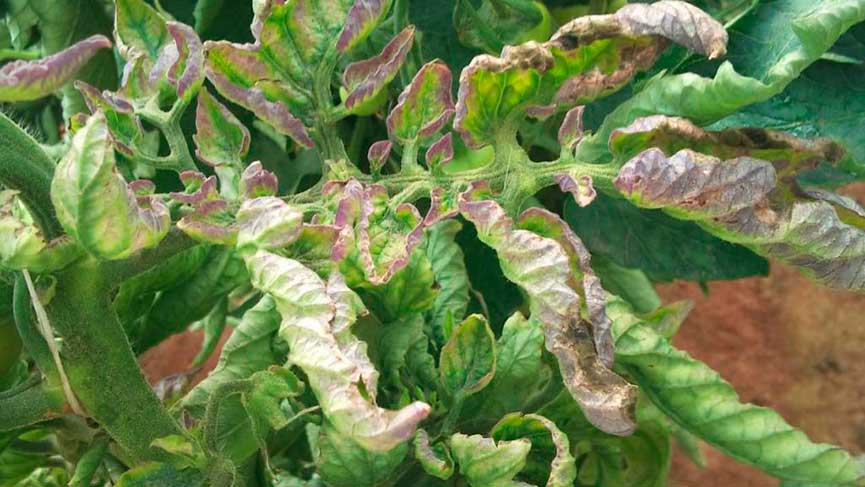
The first signs of late blight
The photo shows what the first signs of late blight on tomatoes look like. First, the leaves are affected: brown spots appear, the sheet begins to dry and fall. If you notice these signs on one of the plants, it should be removed from the site so that the spores of the fungus do not get on healthy plants.
When and how to process tomatoes, tomato tomato seedlings for prevention purposes: tips, names of drugs and folk remedies, stages of treatment
The fight against late blight begins with prevention. Spraying, top dressing - all this will help protect plantations from the appearance of the fungus. When and how to process tomatoes, seedlings of tomato from late blight for prevention? Here are the advice, the names of drugs and folk remedies, the stages of processing:
- In order to prevent the plants, plants should be sprayed with copper sulfate (0.5%) and gash. This event needs to be held after 7-10 days.
- Systematically water the soil under tomatoes with a solution of phytosporin, and spray the plants with the drug. Thanks to this event, the fungus will not appear.
- Folk methods of combating fungus: spraying with milk or kefir. Dilute one of the dairy products 1:10 with water. Spray the plants every 5 days.
Here is a list of drugs that are perfectly coping with the fungus of phytofores:
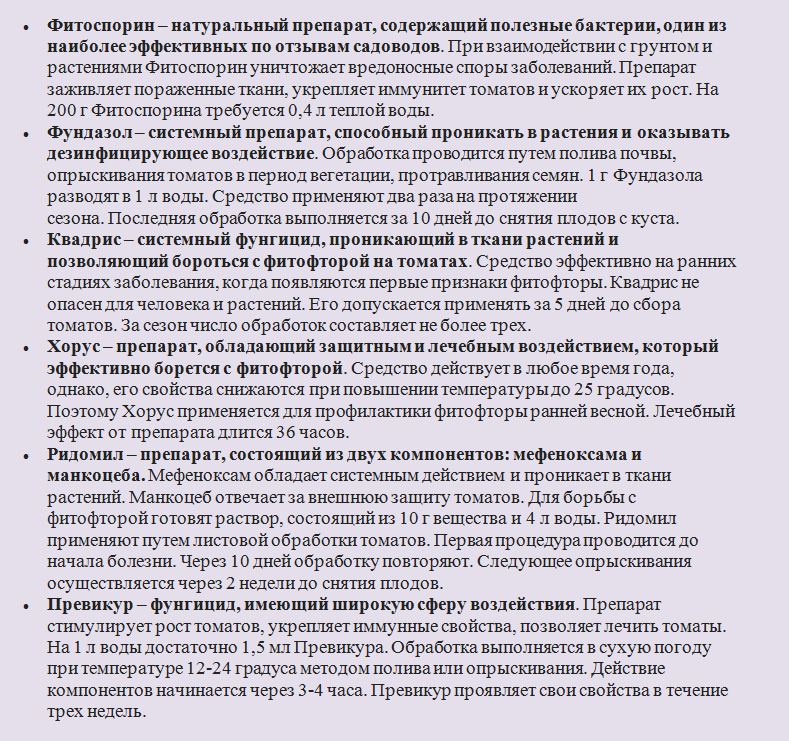
List of drugs from late blight
Advice: Phytopher does not like mulched soil. Mushroom microspores live in the soil. If you lay a layer of a newspaper, then through paper the disease will not be able to get from the soil to green spaces.
What measures to use to save the harvest, if tomatoes have already become ill with late blight: recommendations
Phytopher can nullify all the efforts of the gardener and destroy the crop. Therefore, if you notice the first signs of the appearance of the mushroom, you must immediately act. What measures to use to save the harvest, if the tomatoes have already become ill with late blight? Here are a few recommendations:
- Plants growing on open ground can be treated with any solution containing copper. After such a procedure, tomatoes are forbidden to use 3 weeks in food.
- Tomatoes growing in a greenhouse should not be treated with such solutions, since the fruits are constantly used. Therefore, folk methods are used.
- At the first signs, cut off the unbridled flowers. They are a source of the disease and pull juices from the plant, interfering with the ripening of healthy fruits.
- Remove all the lower leaves and spoiled stems.
- By mid -July, only the top should remainwhich covers the last ripening brush.
- At the end of July, pinch the tomatoesso that their growth stops. Thanks to this, the fruits will ripen faster.
- In the treatment of late blight, use effective biologically active drugs: Fitosporin, Bordeaux mixture, Trichopolist. Together with these drugs, you can use ash, which plants are published a week after planting and at the time of the appearance of the first ovaries.
- Folk remedies help to cope with the fungus. Milk diluted with water, garlic infusion with manganese (100 grams of chopped teeth insist in a glass of water, then add manganese), table salt (dilute salt in a bucket of water) - all these solutions cope with the fungus perfectly and protect the plant from the disease.
- If tomatoes grow in a greenhouse, you should fumigate the room with burning coals wrapped in lamb or beef skin. Greenhouse tomato beds can be published with a mixture of tobacco dust and ash.
Phytopher treatment should be considered successful if you get a good tomato crop at the end of the season. Even if some leaves or fruits were covered with dark spots, but it was possible to eliminate the fungus, then nothing is wrong. Next year, try prevention products to protect the crop from an insidious disease - late blight.
How to use a trichopoline to combat late blight on tomatoes: recipes, dosage
To combat phytophthora on tomatoes, you can use not only Trichopolis, but its cheap analogue - metronidazole. Recipe and dosage: Dissolve 20 tablets in 10 liters of water. Spray all plants with the solution completely. But watering is not too abundantly - about 50 ml per bush.
How to use copper wire to combat late blight on tomatoes: recipes, dosage
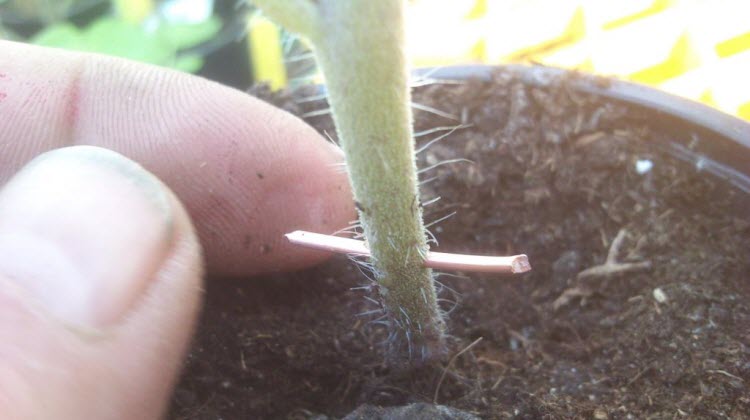
Copper wire to combat late blight on tomatoes
To increase the stability of the tomato to late blight, you can use copper wire. Several recipes and dosages of copper use to combat late blight on tomatoes:
- Stir the copper wire from the upper shell.
- Cut it into small pieces 4 cm long.
- Gently pierce the stems of the planted seedlings of the tomato at a distance of 7 cm from the ground with wire. Do not tighten the ends of the wire around the stem, but lower it down.
This technique will ensure the receipt of useful substances to tomato leaves, and will increase productivity. Watch the video how it is correctly performed.
Video: Copper wire from phytofores on tomatoes
How to use milk to combat late blight on tomatoes: recipes, dosage
It was described above how to use milk to combat late blight on tomatoes. The recipe is simple, dosage 1:10 - 1 part of milk and 10 parts of water. Such a solution copes with the fungus on the leaves and stems perfectly.
How to use iodine to combat late blight on tomatoes: recipes, dosage
Iodine is an effective disinfectant that is used not only in medicine, but also in the processing of garden and organos. Iodine to combat late blight on tomatoes is used in the form of a solution with water and milk. Here is the prescription:
- Pour 10 liters of water into the bucket.
- Dilute 1 liter of milk in it.
- Add 20 drops of iodine and mix again.
This solution needs to spray the tomato bushes, as well as water the soil under them. Highly affected bushes are better to dig and pour this solution with the soil where they grew.
How to use the drug HOM to combat late blight on tomatoes: recipes, dosage

Hom drug to combat late blight on tomatoes
The drug HOM affects the disputes of the patholes of the late blight and destroys them, and also creates a protective layer on the leaves and stems of the plant. Thanks to this processing, the fungus disappears and does not harm the culture throughout its development. The recipe for using the drug HOM to combat late blight on tomatoes:
- Open the package with the product and dilute the contents in 10 liters of water.
- Spray during the growing season in dry and calm weather.
- The interval between spraying is 10-14 days.
Important: The treatment of tomatoes with the drug HOM ends 20 days before the harvest.
How to use copper sulfate to combat late blight on tomatoes: recipes, dosage
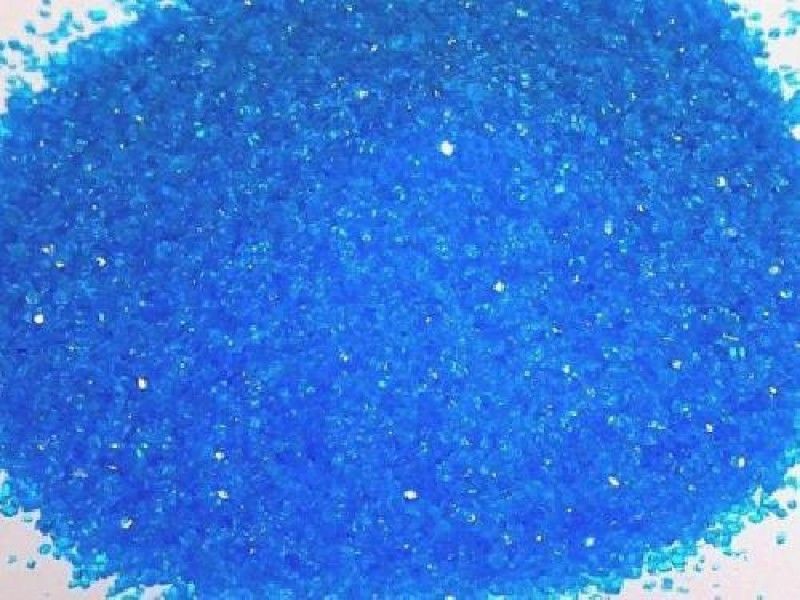
Copper sulfate to combat late blight on tomatoes
Copper sulfate is the salts of copper sulfate. Their solution with water has a fungicidal, insecticid and antiseptic effect. In addition, copper is also used as top dressing for plants so that it develops well. Recipe for using copper sulfate to combat late blight on tomatoes:
- Dilute 100 grams of copper sulfate in 1 liter of warm water.
- When all crystals dissolve, bring the volume of the solution with water to 10 liters.
- It will turn out a 1%solution of copper sulfate. To get a stronger (2%solution), then you need to dilute 200 grams of copper sulfate in 10 liters of water.
The concentration of the solution (1% or 2%) depends on the degree of damage to the culture. The larger the area of \u200b\u200bthe lesion and the faster you need to get rid of the fungus, the more concentrated the solution is prepared.
How to use yeast to combat late blight on tomatoes: recipes, dosage
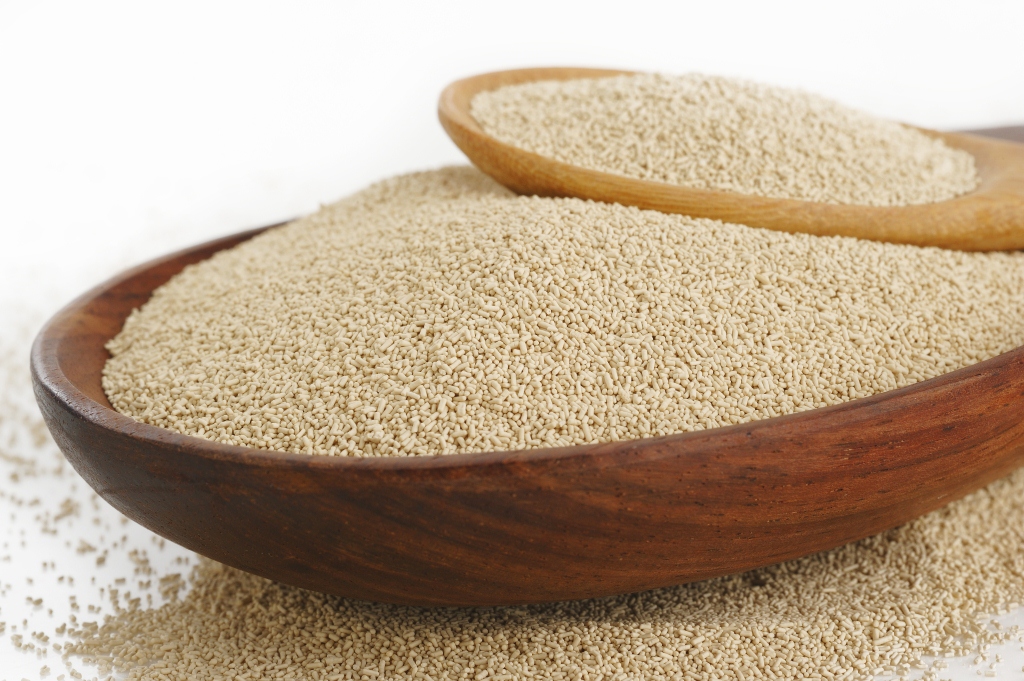
Yeast to fight late blight on tomatoes
Gardeners often spray cultures with yeast solution. Useful yeast mushrooms settled on tomato leaves and supplant the harmful ones that die. Recipe for how to use yeast to combat late blight on tomatoes:
- Heat 3 liters of water to 36 degrees (not higher, otherwise yeast sticks will die).
- Dissolve in this water 1 bag of dry yeast (10 grams) and add 5 tablespoons of sugar.
- Stir the solution and put in a warm place for 5 hours. Stir constantly.
- Then add 7 liters of water and start feeding the plant. For 1 bush - 1 liter of solution.
- Repeat this process every 15 days.
You can make a solution with fresh yeast. Here is the prescription:
- In 1 liter of warm milk, dissolve 100 grams of fresh yeast.
- Put the solution in a warm place for 5 hours.
- Then pour it into a bucket and add water to the very top.
- Then you will need iodine. Add 20 drops of this product to the solution and mix well.
- Spray the tomatoes with this liquid every 14-20 days.
You can also dissolve 100 grams of fresh yeast in 10 liters of warm water and spray tomatoes with this solution. But the procedure with such a solution is repeated every 10 days.
How to use furatsilin to combat late blight on tomatoes: recipes, dosage
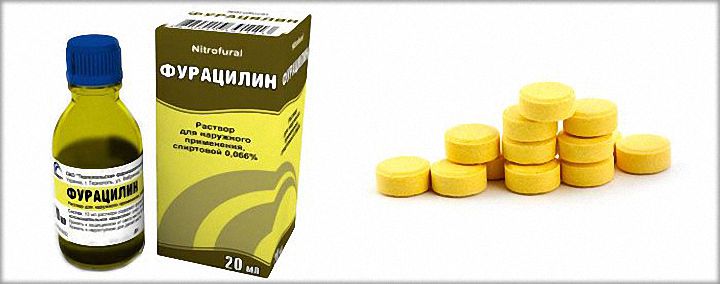
Furatsilin to combat late blight on tomatoes
Furatsilin is considered the best remedy for late blight. For the first time, tomatoes are sprayed with a solution with this drug even before flowering. Then - when the first ovaries appear. The last time they spray when the fruits begin to keep up. This is an excellent prevention of late blight. But, if you notice the first signs of the disease on the culture, then it is important to act immediately. Here is a recipe for using furatsilin to combat late blight on tomatoes:
- In 10 liters of water, dissolve 10 furatsilin tablets.
- Mix well to make a solution without lumps of light yellow color.
- Spray this water of culture and pour the soil.
Such a solution can be stored for a long time in a dark place, but it is better to cook fresh water with furacilin every time.
How to use salt to combat late blight on tomatoes: recipes, dosage
In the fight against late blight, different folk remedies are used. The easiest recipe is a solution of table salt. It is safe for human culture and health, but copes with a fungus perfectly. Recipe for using salt to combat late blight on tomatoes:
- In 10 liters of ordinary water, dissolve 1 cup of food salt.
- Mix the solution well again before spraying.
Before such processing, you need to remove all the leaves damaged by late blight in order to get rid of the disease forever.
How to use green to combat late blight on tomatoes: recipes, dosage

Zelenka to combat late blight on tomatoes
Someone uses iodine to fight late blight, while others-green. The recipe is simple: for 1 liter of water - 1 drop of green. Stir and spray the bushes every two weeks after their transplantation to the ground.
How to use kefir to combat late blight on tomatoes: recipes, dosage
A solution of kefir and water can be used as a fight against late blight every 7 days. This is both prevention and treatment, if the plant is already affected by a fungus. You can only dissolve one kefir in water, or other ingredients can be added to make the product more effective. Recipe for using kefir to combat late blight on tomatoes:
- Prepare 10 liters of water.
- Dissolve 0.5 liters of kefir in it.
- Add 1 cup Coca-Cola or Pepsi-Cola. Mix well and spray the bushes every 7-10 days.
Important: Kefir can be replaced with serum or yogurt.
How to use serum from milk to combat late blight on tomatoes: recipes, dosage
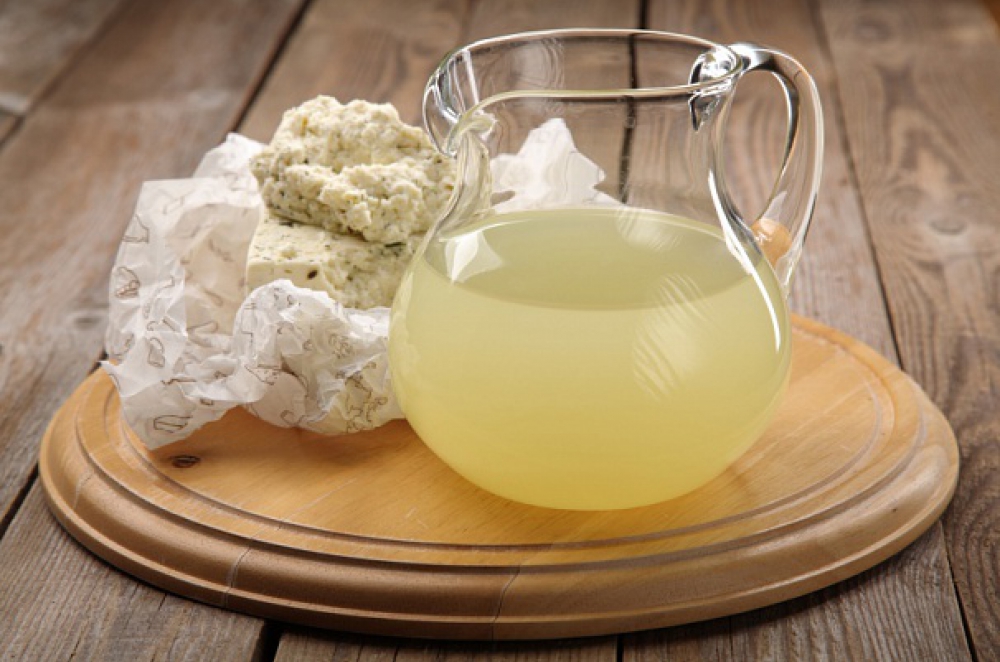
Serum from milk to combat late blight on tomatoes
The recipe for the preparation of a solution to combat late blight with kefir was described above. Instead, you can use serum from milk. The recipe is the same as the recipe for making a solution with kefir. Instead of Coca-Cola, you can add 10 drops of iodine or 50 grams of crushed garlic.
How to use hydrogen peroxide to combat late blight on tomatoes: recipes, dosage
Hydrogen peroxide copes with the fungus at the very first stage of its appearance. This tool helps to forget about the fungus forever if they treat tomato seeds. The recipe for using hydrogen peroxide to combat late blight on tomatoes: you will need a 10%solution of hydrogen peroxide. Soak the tomato seeds for 20 minutes, and then rinse with running water. Next, use them as usual.
How to use soda to combat late blight on tomatoes: recipes, dosage
It seems that without baking soda it is impossible to imagine the departure of cultures in the garden. It is used everywhere. This recipe helps from late blight: Dilute 1 tablespoon of soda in 10 liters of water. Spray the bushes with this solution and water the soil every 14 days.
How to use garlic to combat late blight on tomatoes: recipes, dosage

Garlic to combat late blight on tomatoes
The recipes for combating the fungus that used garlic were described above. The easiest recipe with garlic to combat late blight on tomatoes: grind 50 grams of garlic, add it to the water - 10 liters, and mix well. Spray bushes with this solution. Repeat this way every 15 days.
How to use potassium permanganate to combat late blight on tomatoes: recipes, dosage
Plants should be used with caution, as it can burn the gentle leaves of tomatoes.
- Previously, you need to dissolve several crystals in a small amount of water and only then use this mixture to prepare the solution.
- Dilute a few drops of a pre-prepared potassium permanganate (5-10-no more) in 10 liters of water.
- The solution should be slightly pinkish. If it is dark, then you need to dilute in half the water.
- Spray the plants every 20 days.
In a solution of potassium permanganate, you can treat seeds. Soak them in a weak pink solution for 20 minutes, and then rinse with water at room temperature.
How to make a "slobber" for tomatoes from late blight?
“Salunavik” for tomatoes is done so that the late blight does not penetrate from the soil to the plant. You can make it from cardboard: make a slot to the center, insert the stem of the plant and sprinkle slightly with sawdust on top. It was described above that many gardeners mulch the soil under tomatoes with newspapers. Such paper can be used instead of “saliva”, it will protect the phytophytors from the soil from the penetration.
What to do with tomatoes affected by late blight, can they be preserved, eat?
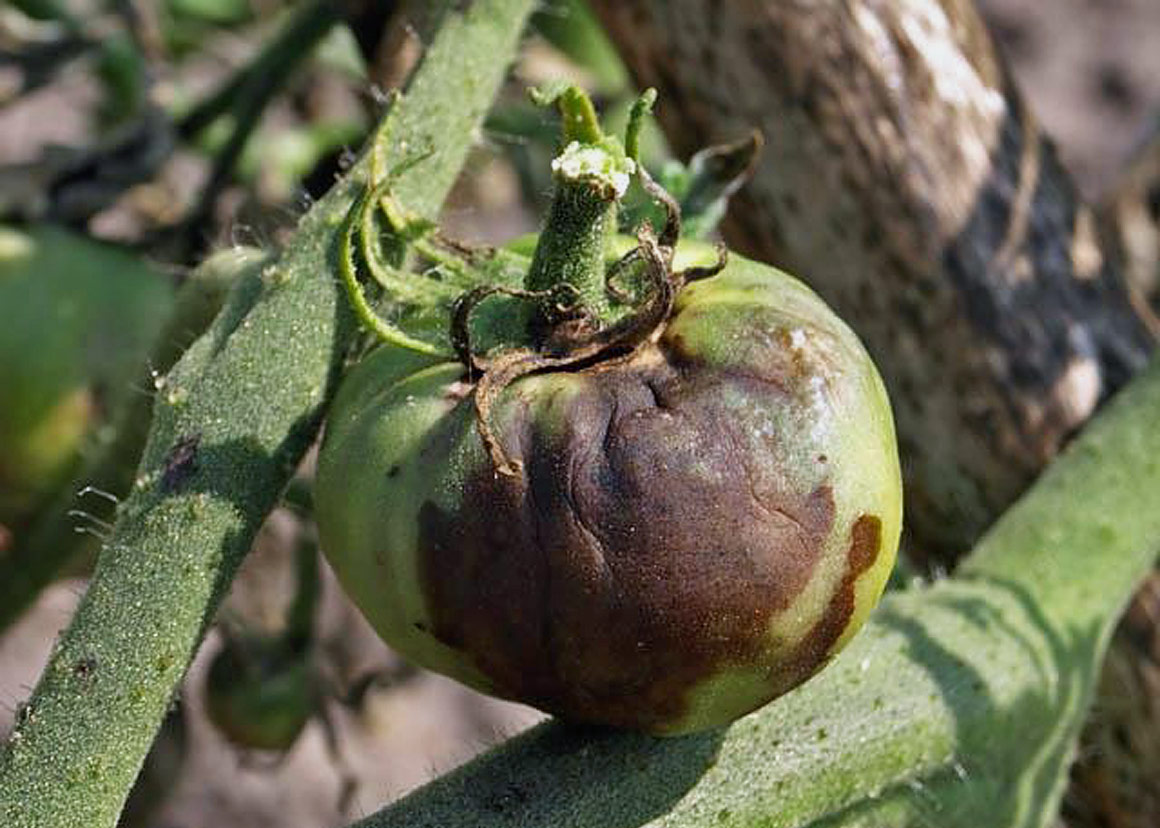
Phytopher
Often the gardener manages to collect fruits that are partially affected by late blight. What to do with tomatoes affected by late blight, can they be preserved, eat?
According to a professor of plant pathologies from the Kornuel University Mag McGrath, diseases of green crops are not transmitted to people and do not harm health. Therefore, often gardeners harvest, cut off the affected areas of fruit, and eat what remains.
Everyone knows that for conservation, only fresh and healthy fruits are selected. Damaged tomatoes can cause an increase in PH in the dish, which will lead to an increase in bacteria. This will make canned food unsuitable for use and even hazardous to health.
Phytopher is a fungus whose disputes are transmitted to a healthy plant, fruits and seeds. But for his life, moisture and living fabric are needed. In dry seeds of tomato tomatoes, a late blight can exist perfectly, so they are usually disinfected using potassium permanganate, hydrogen peroxide and other means. The recipes were described above how to treat tomato seeds before planting so that the plant did not get late).
Is it possible to save torn tomatoes for late blight?

Salvation of torn tomatoes with late blight
In early autumn, gardeners take off the tomato harvest, even if some of the fruits are not completely ripe, so that the suddenly occurred cold does not spoil the uniform crop. Tomatoes are folded in boxes, and it is often found that some fruits begin to blacken. Is it possible to save torn tomatoes for late blight? Here are some tips:
- Such fruits should be immediately processed. Many gardeners believe that the tomatoes will not work differently.
- Vodka processing. If each fruit is wiped with this tool, then this will help protect the tomatoes from the fungus.
- Hot water processing with potassium permanganate or salt. Dissolve the potassium permanganate in water (60-80 degrees with a temperature) to get a slightly pink solution. You can dissolve salt (1 cup per 10 liters of water). Lower the tomatoes into this water for 5-7 minutes, then take it out, dry on a towel and put it on the ripening in the cardboard box.
Advice: Hot water processing is best done together. One person warms up and brings water, the other processes.
How to process the Earth after the phytophthors of tomatoes in the fall and spring in the greenhouse and open ground?
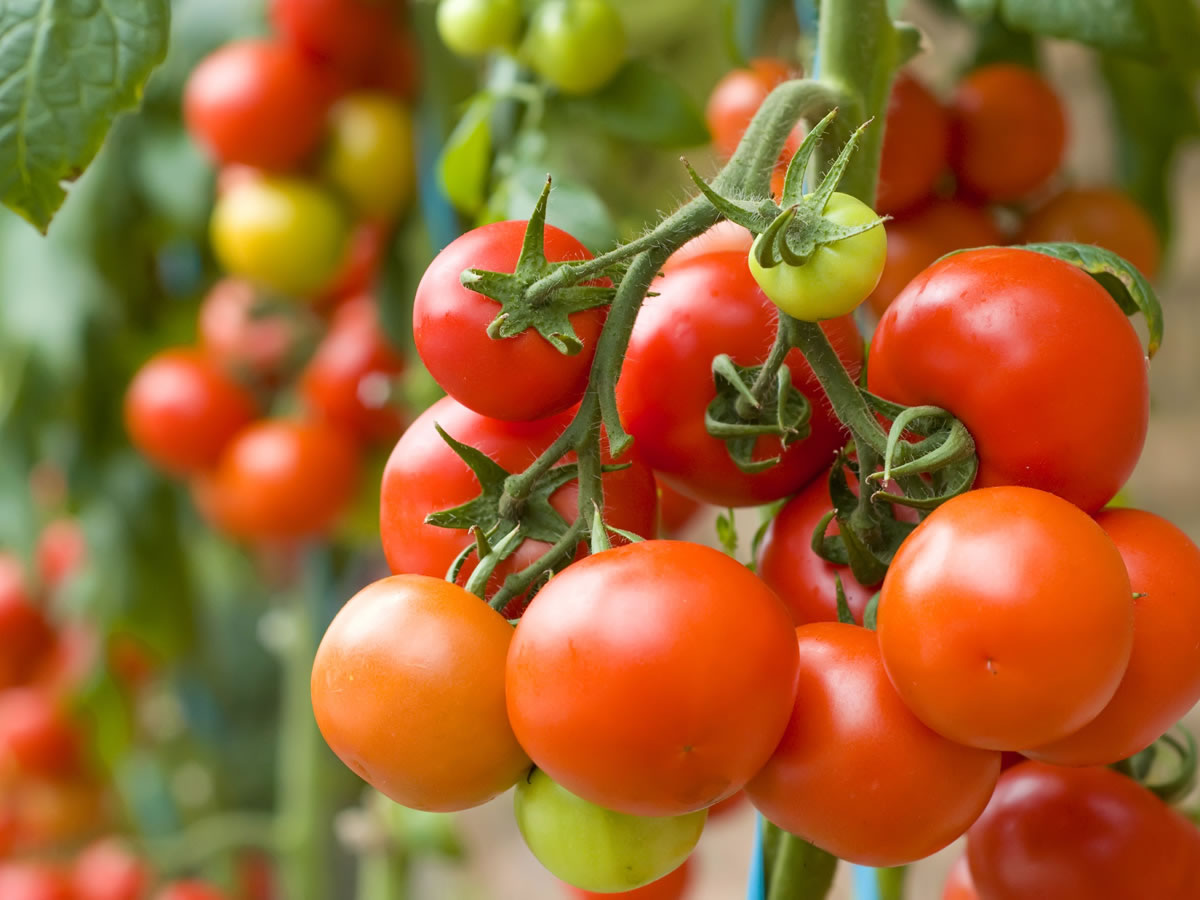
Healthy tomatoes without late blight
It is known that the spores of the disease can be perfectly wintering in the ground, and then infect healthy plants. How to process the Earth after the phytophthors of tomatoes in the fall and spring in the greenhouse and open ground? There are three methods of soil processing:
- agrotechnical
- biological
- chemical
Compliance with agricultural techniques that help protect the crop from late blight is as follows:
- Compliance with crop rotation.
- Do not plant tomatoes next to potatoes.
- It is necessary to plant tomato seedlings at a distance so that air circulation occurs. It is not necessary to water the plants abundantly, since the fungus develops well in moist soil. Many gardeners hardly water tomatoes, and at the same time get a high harvest.
- In the fall, the garden is digged in a dumpy way: a lump of land with disputes will be from above. Although not completely, but partially the fungus will die.
- In the spring before planting seedlings or seeds, the soil is treated with boiling water with manganese. In the greenhouse, you need to close all the windows and doors. In open ground, a bed after processing is covered with a film.
Above, folk methods of combating late blight were described. Choose anyone, prepare the solution and treat the plants and soil. The most effective method is a solution in which kefir, iodine, potassium permanganate, yeast or ash is added. These are proven ingredients that act destructively on the spores of the fungus.
If you do not believe in folk methods, then you can buy special fungicides in a hardware store. Look for their names above in the text. The soil is usually processed in the fall (after digging) and in the spring (before sowing).
Varieties of tomatoes resistant to late blight for open ground and greenhouses: list and names of varieties
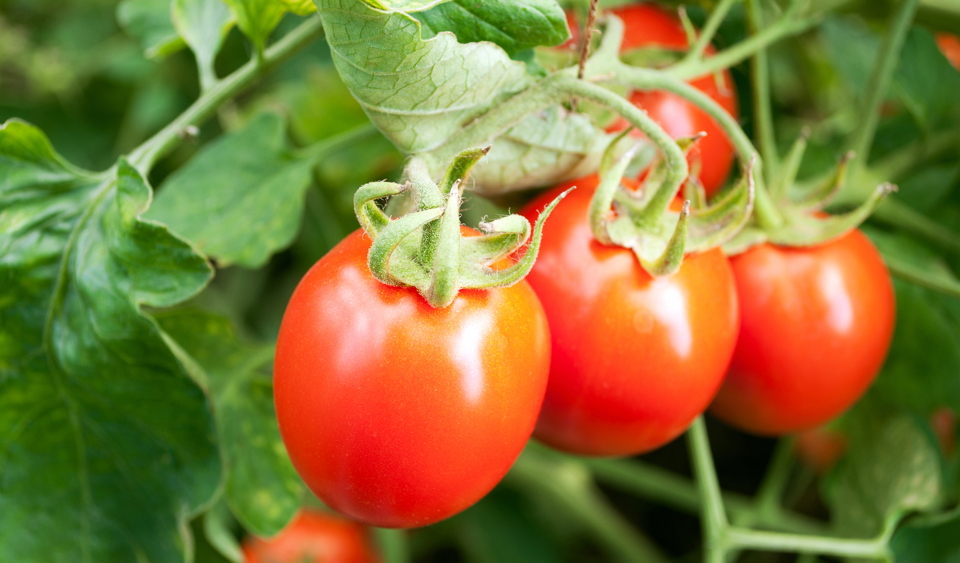
Varieties of tomatoes resistant to late blight
Some people are actively fighting the fungus, processing plants and soil, while others plant special varieties of tomatoes resistant to late blight. Here is the list and names of varieties for open ground and greenhouses:
- Adeline
- Openwork
- Iceberg
- Alenka
- Altai
- Alpha
- Alaska
- Arctic rose
- Aswon
- The balcony miracle
- Balovon of fate
- Barberry
- Bannoye from the saddles
- Betta
- Fighter
- Valentine
- a great warrior
- Explosion
- Grape
- Dwarf
- Lady fingers
- Gina
- Cinderella
- Countryman
- Intuition
- Cockatoo
- Kemerovets
- Kron Prince
- Labrador
- Leningrad chill
- Leader
- Mona Lisa
- Moskvich
- Reflected
- Flame
- Pink leader
- Northern blush
- Snow Leopard
- Fatima
- Miracle summer
- Jubilee Tarasenko
- Apples in the snow
Almost all of these varieties are early and mid -season, so they manage to mature without infecting late blight. Plant the tomatoes away from potatoes, process the soil and plants in a timely manner, and then you will grow a good harvest with healthy tomatoes.
